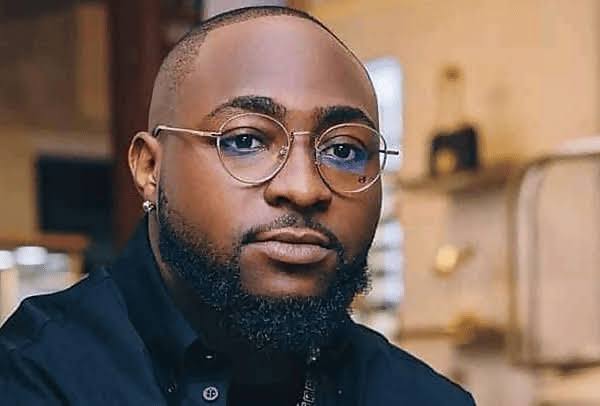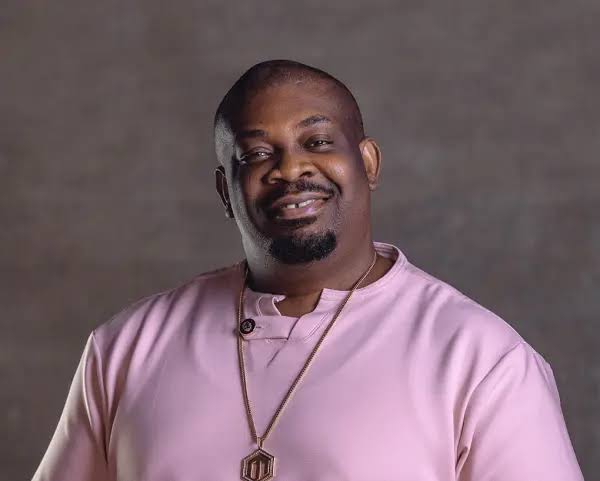Nigeria has produced several talented individuals who have become household names. Through films, afrobeat music and other forms of entertainment, Nigerian celebrities have achieved fame and success both locally and internationally, placing Nigeria in the global spotlight.
Based on their fanbase, net worth, and recognition, some celebrities are rated higher than others. Today, we’ll be taking a look at the top 10 biggest Nigerian celebrities who have influenced the industry both domestically and globally.
Table of Contents
Top 10 Biggest Nigerian Celebrities
-
Wizkid

Wizkid.
Ayodeji Ibrahim Balogun, popularly known as Wizkid, is one of the most influential and biggest Nigerian celebrities. He is a songwriter and singer who was born in Surulere, Lagos. He is the only son out of thirteen children of a Muslim father with 3 wives, including his mother.
Wizkid started pursuing his career in music at the age of 11. He went by the stage name “Lil Prinz” and released a collaborative album with some church friends. They were called the ”Glorious 5.” Wizkid dropped his first single “Holla at your boy” in 2010 which became a megahit song.
He released his debut album in 2011 and gained international recognition when his song, “Ojuelegba” became a global hit in 2015. Wizkid is the first Nigerian artiste to feature in the Guinness World Records for his contribution to Drake’s “One Dance.”
In 2020, Wizkid’s song, “Essence,” became the first Nigerian song to top the chart on the U.S. Billboard Hot 100. He won his first Grammy award in 2021 for his contribution to Beyonce’s “Brown Skin Girl.” Later that year, his album, “Made in Lagos,” and song, “Essence,” were nominated for different categories at the 64th Annual Grammy Award.
-
Davido

Davido.
David Adedeji Adeleke is a musician, songwriter and record producer. He was born in the United States but raised in Nigeria. His father is a famous business tycoon while his late mother was a lecturer. Davido dropped out of Oakland University, Alabama, where he was studying Business Administration to pursue a music career.
He returned to Nigeria in 2011 and continued working on his career despite his father’s disapproval. To please his father, he applied for a degree in music at Babcock University where he graduated in 2015. Davido gained recognition after he released his second single, “Dami Duro” in 2012. He founded his record label, Davido Music Worldwide (DMW) in 2016.
“Fall,” a song he released in 2017 became the first Nigerian pop song to top the chart for the longest duration on Billboard. Davido is a cultural ambassador for Nigeria and has received the letter as an Officer of Order of the Niger (OON). He is also one of the richest Nigerian celebrities with a net worth of over $40 million.
He is the most followed Nigerian on social media with over 27 million followers on Instagram, making him one of the biggest celebrities in Nigeria.
-
Burna boy

Odogwu.
Damini Ogulu, aka Odogwu, is one of the biggest celebrities in Nigeria. He is an award-winning artist, songwriter and producer. He was born in Port Harcourt, Rivers State. His mother was the manager and a dancer for the late Fela Kuti.
Burna Boy started his music career at the age of 10. He learnt how to make music using FruityLoops, a beat-production software he was given by a classmate. Odogwu moved to Lagos in 2010 to kickstart his music career. In 2012, he released the hit single “Like To Party” which placed him in the limelight.
In 2013, Burna Boy released his debut studio album, “Leaving an Impact For Eternity (L.I.F.E).” His 4th album, “African Giant,” was nominated for Best Global Album at the 62nd Annual Grammy Award. “Twice as Tall,” his 5th album, won the award for the same category the following year.
At the BET Awards in 2021, he won the Best International Act, making him the first African artiste to win the award three consecutive times.
-
Tiwa Savage

Tiwa Savage.
Tiwatope Savage was born in Isalẹ Eko but completed her secondary and tertiary education in the UK. She began her music career in secondary school and at 16, she was already a backup singer for some famous singers including George Michael and Mary J. Blige.
In 2006, she participated in The X Factor, UK edition but didn’t make it to the final 12. She moved back to Nigeria a few years later and signed a record deal with Mavins in 2012. Tiwa Savage’s debut album, “Once Upon a Time” was released in 2013 and it bagged different nominations. In 2016, Tiwa Savage signed a management and publishing deal with Roc Nation.
The following year, different media outlets started to refer to her as the Queen of Afrobeats. In July 2022, Savage received an honorary degree from the University of Kent during a graduation ceremony at Canterbury Cathedral. Earlier this year, she performed at the coronation ceremony of King Charles III.
Connect with us on LinkedIn. Let’s keep you updated with more premium insights.
-
Olamide

Bado.
Olamide Adedeji, aka Bado, was born in Bariga, Lagos. He is a songwriter, rapper, singer and record executive as well as one of the biggest Nigerian celebrities. He started his music career in 2010 when he dropped his debut single “Eni Duro,” which was a massive hit.
Bado started his record label, YBNL (Yahoo Boys No Laptop) in 2012. The label has since then produced several talented artists. Olamide is often referred to as “The Voice of the Streets” and he is the originator of several street slangs.
-
Don Jazzy

Don Jazzy.
Michael Collins Ajereh is a record producer and philanthropist. He was born in Abia State but grew up in Lagos. He started playing musical instruments at the age of 12. With D’ Banj, he co-founded Mo’ Hits Records which got divided in 2012.
Between 2011 and 2012, Don Jazzy worked with Kanye West and Jay Z on some songs. He founded Mavins Records in 2012 and has produced many successful musicians since then. Don Jazzy is one of the richest Nigerian celebrities who does not hesitate to help those in need.
-
Omotola Jalade-Ekeinde

Omotola.
The 45-year-old actress, singer, philanthropist and former model started her acting career in 1995 when she accompanied a friend to an audition. Omotola, aka, “Omo Sexy” has featured in over 300 films. In 2012, she became the first Nigerian celebrity to launch a reality TV show tagged, “Omotola: The Real Me.”
In 2013, Omotola was featured on the list of 100 most influential people in the world by Time magazine. She is also a Member of the Order of the Federal Republic (MFR). Omotola is a philanthropist as well as a human rights activist. She is one of the most successful and biggest Nigerian celebrities. She is also the first Nigerian celebrity to receive over a million likes on Facebook.
-
Genevieve Nnaji

Genevieve.
Genevieve is an actress, producer and director. She began her acting career at the age of 8 and has starred in over 200 Nollywood movies. She is the first actress to be awarded Best Actress at the 2001 City People’s Awards. Genevieve was honoured by the Nigerian government as a Member of the Order of the Federal Republic (MFR) for her contributions to Nollywood.
Her movie, “Lionheart” was the first original film from Nigeria to be acquired by Netflix. Lionheart was also the first Nollywood movie to be submitted to the Best International Feature Film Category of the 2020 Oscars.
Genevieve Nnaji is a feminist and a women’s rights activist. She has received several awards for her work. She is also recognised as one of the richest and biggest Nigerian celebrities.
-
Funke Akindele

Jenifa.
Popularly known as Jenifa, Funke Akindele is an actress, director, producer and politician. She came into the limelight after starring in the 1998-2000 sitcom, “I Need to Know.” She has starred in several movies since then and her TV series “Jenifa’s Diary” is one of the most watched TV shows in Nigeria.
Funke is the most nominated actress at the AMVCA. She is also the actress with the most wins at the AMVCA. Her most recent film, “Battle on Buka Street” is currently the highest-grossing film of all time in the country. In 2022, Funke Akindele was selected as the Lagos State deputy gubernatorial candidate under the People’s Democratic Party but lost the election to the All Progressive Congress.
She is the most followed female Nigerian actress and one of the most influential celebrities in Nigeria.
Subscribe to our newsletter. Don’t miss out on our latest, informative posts.
-
2Baba

2Baba.
Innocent Idibia is a songwriter, singer, record producer, entrepreneur as well as a philanthropist. He is known for his influence on pop music in Nigeria in the early 2000s. His initial stage name was “2Face” or “Tuface,” although he officially renamed it to “2Baba” in 2016.
2Baba started his music career in secondary school with his two friends, Blackface and Faze. They formed a band called “Plantashun Boiz” and they released 2 albums before disbanding in 2004. That same year, 2Baba released his debut solo album “Face2Face” which included the global hit song “African Queen.”
This album has been described by many media outlets as the greatest Nigerian debut album of the 21st Century. 2Baba has also been honoured as a Member of the Order of Niger (MON). He is, without doubt, one of Africa’s greatest musicians of all time and one of the biggest Nigerian celebrities.
Conclusion
The Nigerian entertainment industry has gained global recognition through the hard work and dedication of several talented individuals. Our list contains some of the biggest Nigerian celebrities who have left footmarks on the industry. Note that, your favourites not being featured on this list does not make them any less big.
Related Posts
- 10 Nigerians with the Best Profiles on LinkedIn
- Top 7 Nigerian Chefs with the Best Social Media Content
Edited by Priscilla Ajayi.
About the Author
Akorede Olawale is a graduate of Microbiology and is enthusiastic about public health. She enjoys reading, which sparked her interest in writing. Akorede also enjoys cooking and baking as well as scrolling through her favourite social media platform – Twitter.
About Author
- Op-Ed are articles published by guest authors. We no longer accept guest posts. However, we are still open to adding long-term content contributors to our team of insightful writers. To write for us, please check out inisght.ng/guest-post.
Latest entries
 TechnologyOctober 2, 2023URL Shortener: Useful Examples and Why You Need It
TechnologyOctober 2, 2023URL Shortener: Useful Examples and Why You Need It TechnologySeptember 2, 2023Top 7 Meme Generators to Spice Up Your Content Creation Process
TechnologySeptember 2, 2023Top 7 Meme Generators to Spice Up Your Content Creation Process CampusSeptember 1, 2023A Comprehensive Guide to Choosing the Right University Course in Nigeria
CampusSeptember 1, 2023A Comprehensive Guide to Choosing the Right University Course in Nigeria Business InsightsAugust 24, 2023Building a Portfolio Website: The Ultimate Guide
Business InsightsAugust 24, 2023Building a Portfolio Website: The Ultimate Guide



